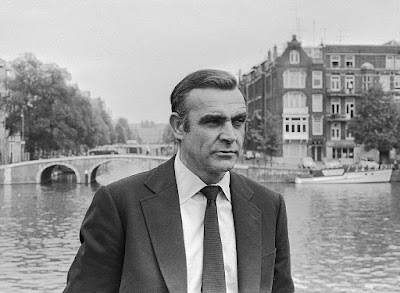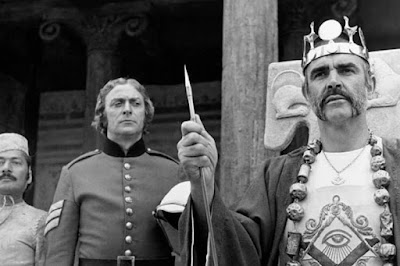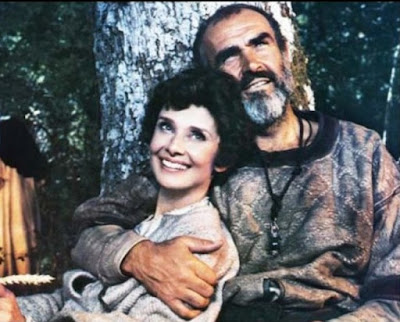 |
| 25.08.1930-31.10.2020
|
Another icon leaves us. That's the news I woke up to, this morning. And I’m both shaken and stirred. (Will I ever stop writing
tributes this year?)
I watched very few English movies growing up. For
one, they took a long time to release in India. Secondly, I didn’t really
understand the accents. And third, they really weren’t as entertaining as the ‘masala’
films I grew up watching.
But when I'd just entered my teens, I devoured my father’s
Ian Fleming collection and fell in love with the saturnine ‘hero’ who was so
unlike the usual protagonists of fiction. The fast-paced stories were thrilling
to someone who was just learning about the Cold War. There was enough ‘reality’
to ground these books (of course, since Ian Fleming was a naval intelligence
officer and a journalist).
My first introduction to the films based on these
novels was Dr No, which I watched in Lido in Bangalore. I remember sitting on
the edge of my seat – I loved every minute of it. It was also my first
introduction to Sean Connery who played the spy.
Later, my father took me to
every Bond film that re-released: From Russia with Love, Goldfinger,
Thunderball, You Only Live Twice, Diamonds are Forever, Never Say Never Again (a remake of Thunderball) ... Seven films as the spy with the ‘License to Kill’. Seven films in which the protagonist
was a cold killing
machine, someone who can, and did skirt the laws of various countries in his
quest to track down the villain, who could be borderline cruel.
Connery fit the role to a T. He had an ‘old’ face,
even when he was young – craggy, asymmetrical, with a weariness that seemed
part of his soul. He epitomised the sexy, charismatic, no-time-for-love, dangerous
British spy, much like Jeremy Brett came to epitomise Arthur Conan Doyle’s Sherlock
Holmes in the minds of millions of viewers.
So much so that when Connery walked away from his
character after Diamonds are Forever, and Roger Moore took over the mantle, fans were dismayed, as ‘Bond’ became less dark and dangerous, and more
humorous and light-hearted. Besides, Roger Moore who was identified as ‘The Saint’,
Leslie Charteris’ bold buccaneer, did not ‘fit’ the author’s
description of James Bond. “Moore is just too ‘pretty’ ”, complained one critic
when Live and Let Die released.
Strangely enough, Connery himself was not the first choice
to play James Bond in the first Bond film. Neither was Ian Fleming very
impressed with him. He’s said to have quipped, “I’m looking for Commander Bond,
not an overgrown stuntman.” He had hoped for David Niven. However, the success of Dr No and the response
that ‘James Bond’ received, especially from women, set all doubts at rest.

The James Bond films were ‘male’ films – the view
is masculine, as is the perspective. The women were merely eye candy with names like
Pussy Galore and Solitaire. Kissy Suzuki, Honey Rider, Vesper Lynd. They were
there for Bond to seduce, and later die. The films didn’t waste much time on ‘romance’,
except in “On Her Majesty’s Secret Service’, where Bond marries Teresay ‘Tracy’
Darco, only to witness her being killed by arch-villain Bloefield. (On Her Majesty’s… starred
George Lazenby, in his only outing as James Bond.) For Connery, that wasn’t the
problem; the problem was that he was bored playing Bond. “I have always hated
that damned James Bond,” he’s said. “I’d like to kill him.” So fed up was he,
in fact, that he gave his fees for Diamonds are Forever to charity.
Forever tied to Bond, perhaps, but Connery has
stepped out of the role before. To play Mark Rutland in Alfred Hitchcock’s
underrated Marnie, which Hitchcock fans love to hate. But my personal
favourites among Connery’s early non-Bond films are Sidney Lumet’s slow-paced
police thriller The Offence (1973) and John Huston’s The Man Who Would
Be King (1975), in which he starred with friend Michael Caine.
But Connery’s best was yet to come. As he grew
older, he seemed to grow more light-hearted. The dour Scots expression had
given way to an avuncular presence – but the balding, bearded, warm presence would
still evoke an audience response, as was evidenced in Robin and Marian (1976)
where he starred as an aging Robin Hood opposite Audrey Hepburn’s Maid
Marian.
You can see the 'hero' change to become the character. As Jim Malone, the Irish
American cop from The Untouchables (1987) – which won Connery an Oscar for
Best Supporting Actor, he is the veteran who mentors Elliot Ness (Kevin Costner), a federal agent and supports him in his endeavour to put Al Capone (Robert De Niro) behind bars. In one of the film's iconic dialogues, he tells Ness, "You want to know how to get Capone? They pull a knife, you pull a gun.
He sends one of yours to the hospital, you send one of his to the
morgue. That's the Chicago way." Or The Russia
House, based on John Le Carre’s spy thriller, where Connery plays Bartholomew Scott-Blair,
a British publisher, who is forced to become an undercover agent. Or even The Hunt for Red October (1990) in which he plays
a Soviet submarine captain, who wants to defect to the west. But perhaps it was his much-loved turn as
Professor Henry Jones, Sr., a crazy eccentric professor of medieval studies
that has remained in the minds of a younger generation of movie-goers. Steven
Spielberg always had Connery in mind for the role; Connery, only 12 years older
than Harrison Ford, was initially reluctant, but then decided that the character
of a gruff, Victorian, Scottish father was too good to give up. “Only Sean
Connery could have played Indy’s father,” George Lucas had once said. The last
film in the Indy Jones trilogy will forever be my favourite because of Sean
Connery’s interactions with Harrison Ford in the film. But even though Prof. Henry Jones is a hoot, I
first ‘met’ Sean Connery as Bond. James Bond. And he will always be the most definitive
Bond for me. Goodbye, Mr Bond. RIP. You will be missed.












No comments:
Post a Comment